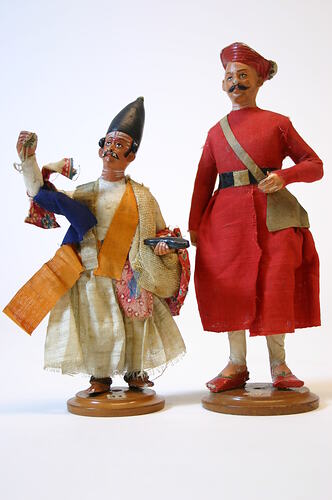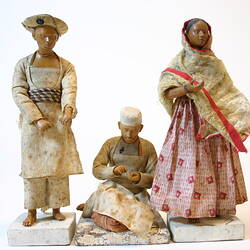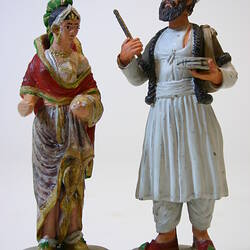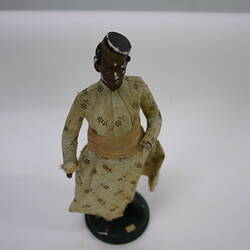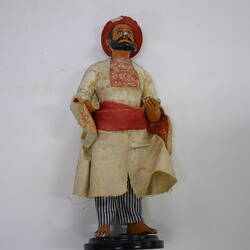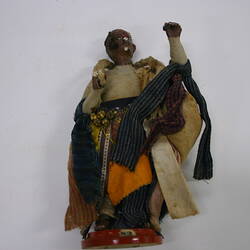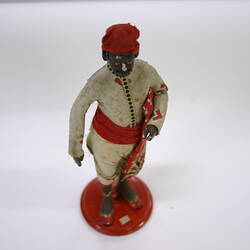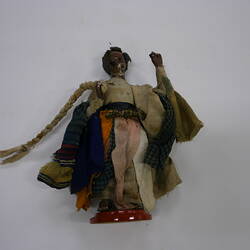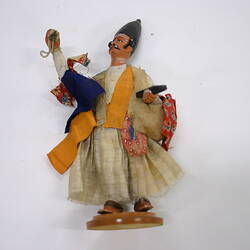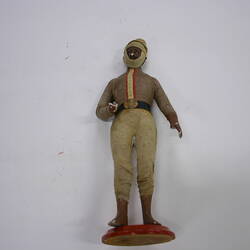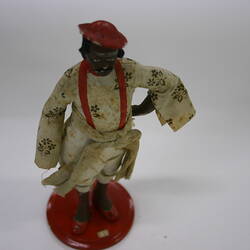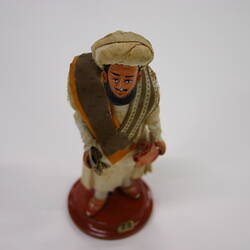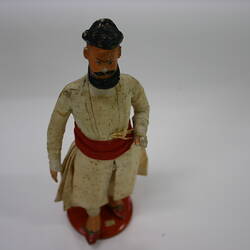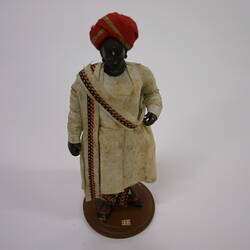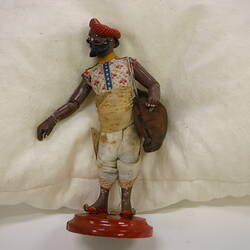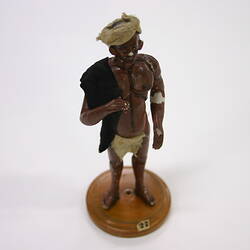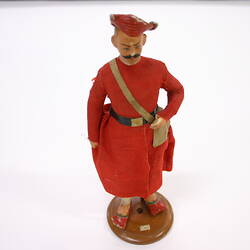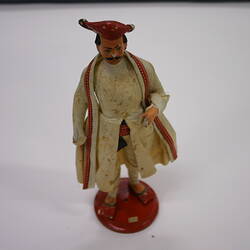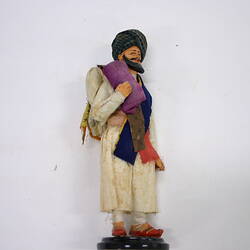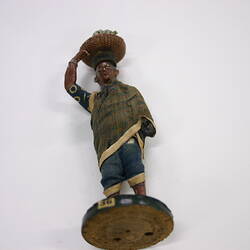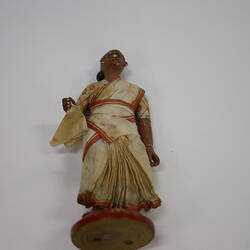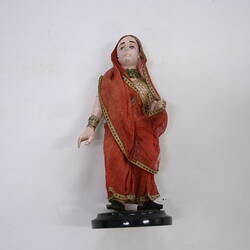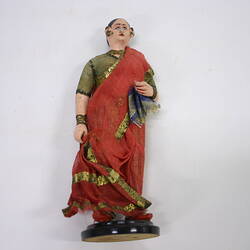Poona has a long history of clay modelling, with European travellers noting the sale of clay figures as early as the mid 1700s (Moses, 1750, p. 184). Clay is modelled over a wooden armature, which is attached to a turned wooden base. The figures are painted in naturalistic tones and dressed in fabric clothing. Tools that relate to the occupation of the figure are made from real materials: wads of paper held in the hand of a clerk; bundles of fabric over the shoulder of a cloth dealer; metal needle and cotton thread in the hand of a tailor; and modelled clay pots at the feet of a potter. Headpieces, hair, facial features and shoes are painted on in realistic hues. Occasionally body hair is applied.
Unlike the Krishnanagar figures, which look like portraits of actual people, 'Poonah' figures have a generic appearance. A comparative study of the group of 84 figures in the museum's collection shows a number of similarities in stance that suggest stock figures were created, then individualised through dress. This approach to the manufacture of 'Poonah' figures does not negate their artistry. Mukharji noted 'their superior finish' (1888, p. 73) in his report for the 1888 Glasgow Exhibition, and while 'Poonah' figures might lack the animated, life-like appearance of those from Krishnanagar, the detail of their dress and accoutrements is incredible, easily enabling the identification of occupation or caste represented.
References:
Moses, Henry (1750). Sketches of India: With Notes on the Seasons, Scenery, and Society of Bombay, Elephanta, and Salsette, London, Simpkin, Marshall & Co.
Mukharji, T.N. (1888). Art Manufactures of India: specially compiled for the Glasgow International Exhibition, 1888, Calcutta, Superintendent of Government Printing.
More Information
-
Keywords
-
Authors
-
Article types
